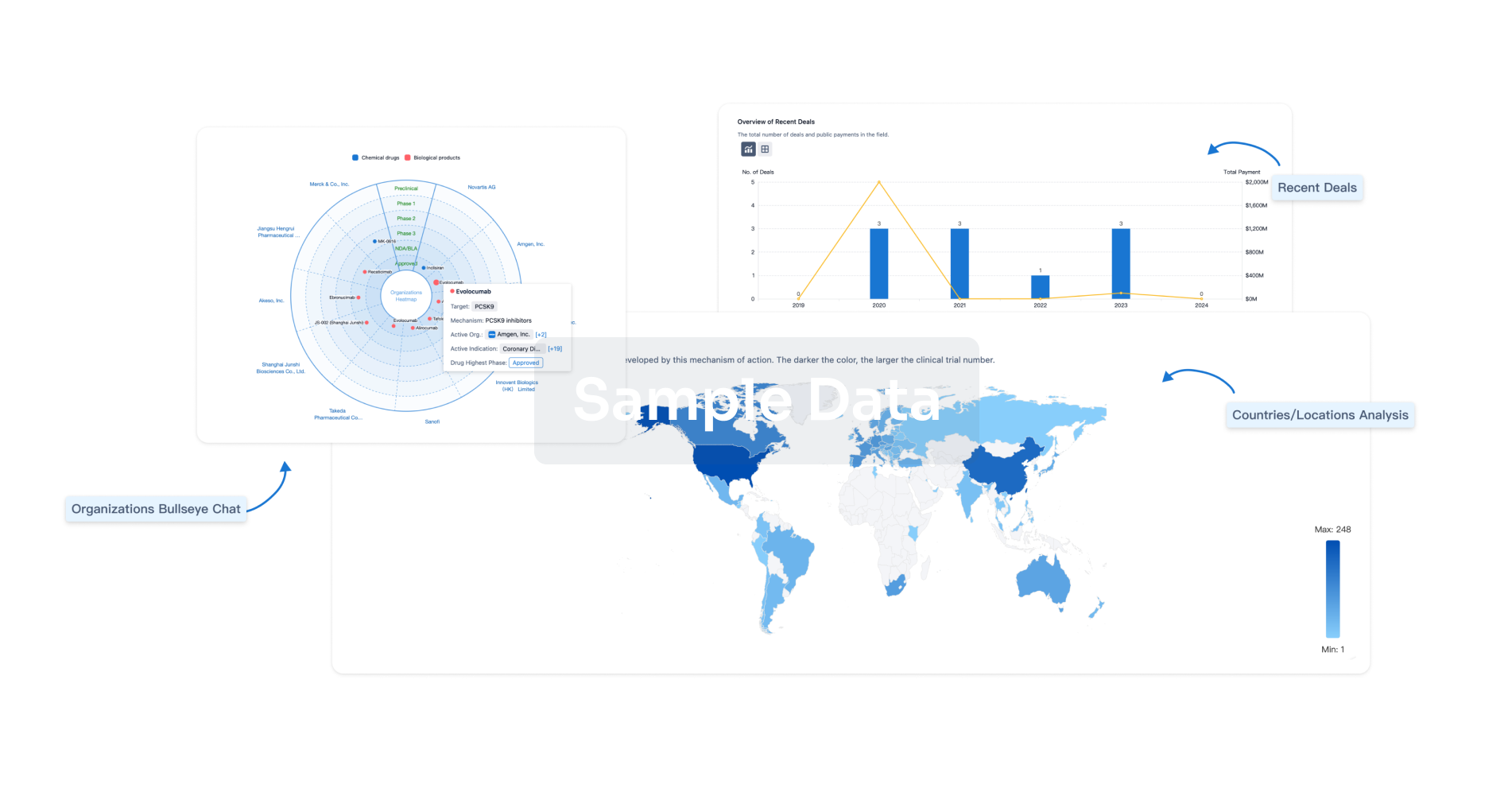Request Demo
Last update 08 May 2025
ICAM-1 x Tubulin
Last update 08 May 2025
Related
3
Drugs associated with ICAM-1 x TubulinTarget |
Mechanism ICAM-1 modulators [+1] |
Active Org. |
Originator Org. |
Active Indication |
Inactive Indication- |
Drug Highest PhasePreclinical |
First Approval Ctry. / Loc.- |
First Approval Date20 Jan 1800 |
Target |
Mechanism ICAM-1 inhibitors [+1] |
Active Org. |
Originator Org. |
Active Indication |
Inactive Indication- |
Drug Highest PhasePreclinical |
First Approval Ctry. / Loc.- |
First Approval Date20 Jan 1800 |
Target |
Mechanism ICAM-1 inhibitors [+1] |
Active Org. |
Originator Org. |
Active Indication |
Inactive Indication- |
Drug Highest PhasePreclinical |
First Approval Ctry. / Loc.- |
First Approval Date20 Jan 1800 |
100 Clinical Results associated with ICAM-1 x Tubulin
Login to view more data
100 Translational Medicine associated with ICAM-1 x Tubulin
Login to view more data
0 Patents (Medical) associated with ICAM-1 x Tubulin
Login to view more data
52
Literatures (Medical) associated with ICAM-1 x Tubulin15 Nov 2024·Investigative Ophthalmology & Visual Science
High Intraocular Concentration of Fibrinogen Regulates Retinal Function Via the ICAM-1 Pathway
Article
Author: Imai, Hisanori ; Nakamura, Makoto ; Sotani, Yasuyuki ; Miki, Akiko ; Kusuhara, Sentaro ; Yamada, Hiroko
01 May 2024·Behavioural Brain Research
Transcriptomic analysis to identify genes associated with hypothalamus vulnerability in aging mice with cognitive decline
Article
Author: Tian, Xiaofeng ; Shi, Ying ; Zhao, Zhixing ; Su, Dongmei ; Zhao, Jing ; He, Bin ; Shi, Cuige
01 Dec 2021·Arthritis Research & TherapyQ2 · MEDICINE
Inhibition of histone deacetylase 6 suppresses inflammatory responses and invasiveness of fibroblast-like-synoviocytes in inflammatory arthritis
Q2 · MEDICINE
ArticleOA
Author: Shon, Sehui ; Jun, Jae Hyun ; Song, Hyeseung ; Bae, Daekwon ; Ha, Nina ; Song, Yeong Wook ; Shin, Jieun ; Park, Jin Kyun ; Choi, Young Il ; Yoo, Hyun Jung ; Pap, Thomas ; Suh, Dong-Hyeon
Analysis
Perform a panoramic analysis of this field.
login
or

AI Agents Built for Biopharma Breakthroughs
Accelerate discovery. Empower decisions. Transform outcomes.
Get started for free today!
Accelerate Strategic R&D decision making with Synapse, PatSnap’s AI-powered Connected Innovation Intelligence Platform Built for Life Sciences Professionals.
Start your data trial now!
Synapse data is also accessible to external entities via APIs or data packages. Empower better decisions with the latest in pharmaceutical intelligence.
Bio
Bio Sequences Search & Analysis
Sign up for free
Chemical
Chemical Structures Search & Analysis
Sign up for free
